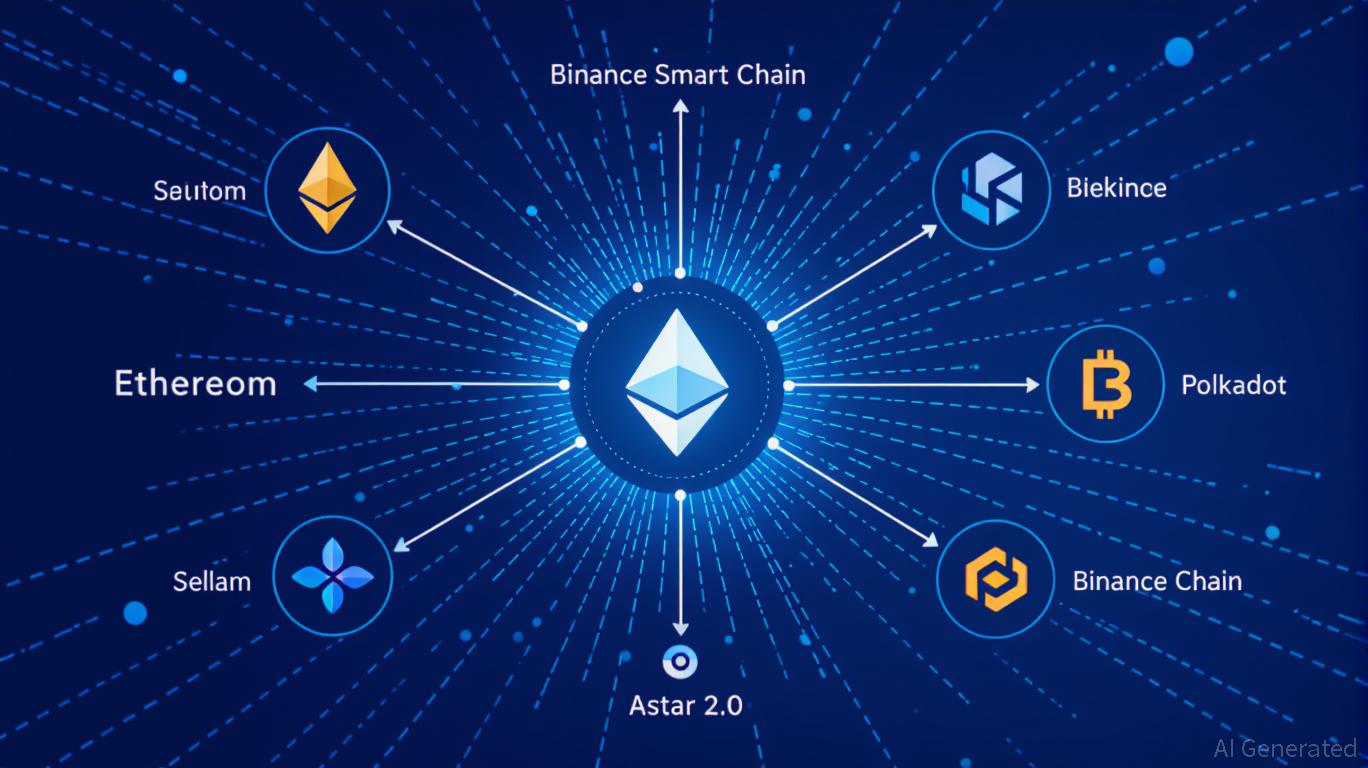Blockchain Betting's Legal Challenge: Is It Considered Gambling or a Derivative?
- NBA star Tristan Thompson advocates blockchain-based sports prediction markets, aligning with DeFi's potential to transform fan engagement. - Kalshi faces legal scrutiny as a federal judge questions whether its event contracts qualify as derivatives under U.S. commodity laws. - Blockchain startups like Ideosphere and Portage Biotech explore prediction markets for scientific funding, leveraging tokenized assets and staking revenues. - Regulatory ambiguity over derivatives vs. gambling risks stifling innov
Tristan Thompson, once an NBA standout and now a blockchain innovator, has become a prominent supporter of sports prediction markets, using his influence to showcase how decentralized finance (DeFi) could transform the sports betting landscape. His recent remarks and financial backing reflect a wider movement within the industry, as firms such as Kalshi and Ideosphere work through regulatory and legal complexities to broaden the reach of prediction markets. Still, the future remains uncertain, especially as courts deliberate on whether these platforms comply with current U.S. commodity trading regulations.
The regulatory environment for sports prediction markets shifted significantly in late November when a federal judge in Nevada expressed doubts about Kalshi's argument that its offerings should be considered derivatives instead of gambling products. In a legal dispute over the company's compliance with the Commodity Exchange Act, Judge David C. Borman questioned if Kalshi's event contracts—which are essentially bets on sports results—could be categorized as swaps or futures. "Your definition seems so expansive that almost anything could be labeled a swap," Borman commented,

The larger economic backdrop also supports the growth of prediction markets. While AI-related stocks have experienced instability amid doubts about their long-term prospects, blockchain-driven platforms are becoming popular alternatives to traditional betting. For instance,
Thompson's support fits within these developments, as he champions blockchain-based solutions that emphasize openness and user autonomy. Nonetheless, the industry's expansion depends on clarifying regulatory uncertainties. The outcome of the Kalshi case, in particular, could establish a benchmark that either validates or restricts the evolution of prediction markets.
Disclaimer: The content of this article solely reflects the author's opinion and does not represent the platform in any capacity. This article is not intended to serve as a reference for making investment decisions.
You may also like
Astar 2.0: Leading a New Generation of DeFi and Cross-Chain Advancements
- Astar 2.0 introduces a zkEVM mainnet and cross-chain interoperability, slashing gas fees and enabling 150,000 TPS with 2025 scalability goals. - Strategic partnerships with Mazda, Japan Airlines, and Sony demonstrate blockchain's real-world applications in logistics, loyalty programs, and digital asset tokenization. - Q3 2025 data shows $2.38M DeFi TVL growth and 20% active wallet increase, alongside a $3.16M institutional ASTR token acquisition. - The platform aims to solidify its role as a foundational

Aster DEX Introduces New On-Ramp: Transforming Retail Participation in DeFi
- Aster DEX integrates institutional-grade custody and privacy tech (zero-knowledge proofs) to bridge retail-institutional DeFi gaps via BNB Chain partnerships. - TVL surged to $2.18B by late 2025 through yield-bearing stablecoins and hidden orders, attracting both retail and institutional liquidity. - Despite compliance gaps and wash trading concerns, Aster's Binance alignment and Coinbase listing signals growing institutional validation.

Bitcoin News Today: Bitcoin's Decline: $100k Level Emerges as a Key Arena for Institutional Investors
- Bitcoin fell below $95,000 on Nov 13 amid profit-taking and leveraged liquidations, testing $100,000 as a critical support level. - Analysts warn further declines could intensify volatility, despite $523M ETF inflows and institutional strategies like MicroStrategy's $65B Bitcoin exposure. - Mining expansions by Hyperscale Data and Canaan Inc. contrast with Ethereum's ETF outflows, highlighting divergent institutional risk assessments. - Market focus remains on Bitcoin's ability to hold above $100,000, wi

Bitcoin News Update: Bitcoin Faces Turbulence as Fed Actions, ETFs, and Leverage Trigger $95k Drop
- Bitcoin fell below $95,000 in late November 2025, erasing 2025 gains amid macroeconomic, institutional, and technical pressures. - XWIN Research identified three drivers: fading Fed rate-cut hopes, $1.1B ETF outflows, and $600M+ leveraged liquidations after key support collapses. - Analysts warn the correction could persist until mid-2026 if regulatory shifts or Fed policy fail to stabilize markets amid extreme fear metrics.
